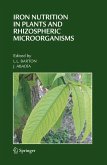High Quality Content by WIKIPEDIA articles! In vascular plants, xylem is one of the two types of transport tissue, phloem being the other. The word "xylem" is derived from classical Greek (xylon), "wood", and indeed the best-known xylem tissue is wood, though it is found throughout the plant. Its basic function is to transport water. The xylem is responsible for the transport of water and soluble mineral nutrients from the roots throughout the plant. It is also used to replace water lost during transpiration and photosynthesis. Xylem sap consists mainly of water and inorganic ions, although it can contain a number of organic chemicals as well. This transport is not powered by energy spent by the tracheary elements themselves, which are dead by maturity and no longer have living contents. Two phenomena cause xylem sap to flow:
Bitte wählen Sie Ihr Anliegen aus.
Rechnungen
Retourenschein anfordern
Bestellstatus
Storno








